 |
 |
 |
 |
 |
 |
| |
 |
|
 |
 |
 |
  |
  |
 |
 |
 |
 |
| 2015 PRITZKER ARCHITECTURE PRIZE | FREI OTTO
|
|
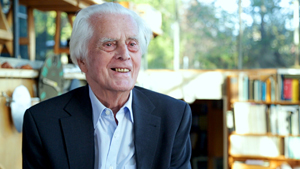 Visionary architect, 89, dies in his native Germany on March 9, 2015 Visionary architect, 89, dies in his native Germany on March 9, 2015
Otto was an architect, visionary, utopian, ecologist, pioneer of lightweight materials, protector of natural resources and a generous collaborator with architects, engineers, and biologists, among others.
Chicago, IL (March 10, 2015) — Frei Otto has received the 2015 Pritzker Architecture Prize, Tom Pritzker announced today. Mr. Pritzker is Chairman and President of The Hyatt Foundation, which sponsors the prize. Mr. Pritzker said: “Our jury was clear that, in their view, Frei Otto’s career is a model for generations of architects and his influence will continue to be felt. The news of his passing is very sad, unprecedented in the history of the prize. We are grateful that the jury awarded him the prize while he was alive. Fortunately, after the jury decision, representatives of the prize traveled to Mr. Otto’s home and were able to meet with Mr. Otto to share the news with him. At this year’s Pritzker Prize award ceremony in Miami on May 15 we will celebrate his life and timeless work.”
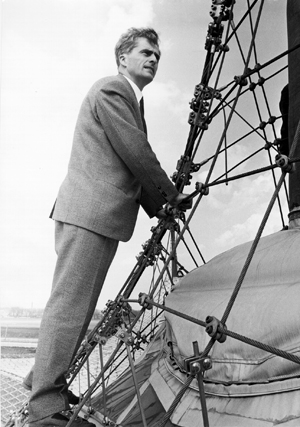 Mr. Otto becomes the 40th laureate of the Pritzker Prize and the second laureate from Germany. Mr. Otto becomes the 40th laureate of the Pritzker Prize and the second laureate from Germany.
The Jury of the Pritzker Architecture Prize selected Mr. Otto as the laureate earlier this year, and shortly thereafter the Executive Director of the prize traveled to Otto’s home and studio in Warmbronn, Germany, near Stuttgart, to deliver the news in person. Learning that he had received the Pritzker Prize, Mr. Otto said: “I am now so happy to receive this Pritzker Prize and I thank the jury and the Pritzker family very much. I have never done anything to gain this prize. My architectural drive was to design new types of buildings to help poor people especially following natural disasters and catastrophes. So what shall be better for me than to win this prize? I will use whatever time is left to me to keep doing what I have been doing, which is to help humanity. You have here a happy man.”
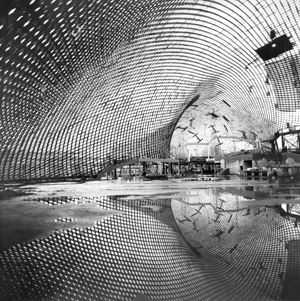 Mr. Otto practiced a holistic and collaborative approach to architecture, working with environmentalists, biologists, engineers, philosophers, historians, naturalists, artists, and other architects. A distinguished teacher and author, Otto pioneered the use of modern lightweight tent-like structures for many uses. He was attracted to them partly for their economical and ecological values. He believed in making efficient, responsible use of materials, and that architecture should make a minimal impact on the environment. Frei Otto was a utopian who never stopped believing that architecture can make a better world for all. Mr. Otto practiced a holistic and collaborative approach to architecture, working with environmentalists, biologists, engineers, philosophers, historians, naturalists, artists, and other architects. A distinguished teacher and author, Otto pioneered the use of modern lightweight tent-like structures for many uses. He was attracted to them partly for their economical and ecological values. He believed in making efficient, responsible use of materials, and that architecture should make a minimal impact on the environment. Frei Otto was a utopian who never stopped believing that architecture can make a better world for all.
In contrast to the heavy, columned, stone and masonry architecture preferred by the National Socialists in the Germany in which he grew up — Otto’s work was lightweight, open to nature and natural light, non-hierarchical, democratic, low-cost, energy-efficient, and sometimes designed to be temporary.
He is best known for the roofing for the main sports facilities in the Munich Olympic Park for the 1972 Summer Olympics (with Behnisch + Partner and others), for the German pavilion at the 1967 International and Universal Exposition (Expo 67), the Japan Pavilion at Expo 2000 in Hannover, Germany (in 2000, with Shigeru Ban (2014 laureate of the Pritzker Architecture Prize)), a series of tent structures for German Federal Exhibitions in the 1950s, and for his work in the Middle East.
The Chair of the jury of the Pritzker Architecture Prize, Lord Peter Palumbo, said today: “Time waits for no man. If anyone doubts this aphorism, the death yesterday of Frei Otto, a titan of modern architecture, a few weeks short of his 90th birthday, and a few short weeks before his receipt of the Pritzker Architecture Prize in Miami in May, represents a sad and striking example of this truism. His loss will be felt wherever the art of architecture is practiced the world over, for he was a universal citizen; whilst his influence will continue to gather momentum by those who are aware of it, and equally, by those who are not.
“Frei stands for Freedom, as free and as liberating as a bird in flight, swooping and soaring in elegant and joyful arcs, unrestrained by the dogma of the past, and as compelling in its economy of line and in the improbability of its engineering as it is possible to imagine, giving the marriage of form and function the invisibility of the air we breathe, and the beauty we see in Nature.”
The distinguished jury that selected the 2015 Pritzker Laureate consists of its chairman, Lord Palumbo, architectural patron, Chairman Emeritus of the Trustees, Serpentine Galleries, former Chairman of the Arts Council of Great Britain, and former Chairman of the Tate Gallery Foundation; Alejandro Aravena, architect and Executive Director of Elemental in Santiago, Chile; Stephen Breyer, U.S. Supreme Court Justice, Washington, D.C.; Yung Ho Chang, architect and educator, Beijing, The People’s Republic of China; Kristin Feireiss, architecture curator, writer, and editor, Berlin, Germany; Glenn Murcutt, architect and 2002 Pritzker Laureate, Sydney, Australia; Richard Rogers, architect and 2007 Pritzker Laureate, London, United Kingdom; Benedetta Tagliabue, architect and director of EMBT Miralles Tagliabue, Barcelona, Spain; and Ratan N. Tata, Chairman Emeritus of Tata Sons, the holding company of the Tata Group, Mumbai, India. Martha Thorne, Associate Dean for External Relations, IE School of Architecture & Design, Madrid, Spain, is the Executive Director of the Prize.
The 2015 award ceremony will be held in Miami Beach at the New World Center, designed by 1989 Pritzker Prize Laureate Frank Gehry, on May 15, 2015. This marks the first time the ceremony will be in Miami, joining the culturally and historically significant venues around the world. The ceremony will be streamed live on PritzkerPrize.com, the website of the Pritzker Architecture Prize.
2015 Pritzker Prize laureate Frei Otto on his life, career, and dream from The Pritzker Architecture Prize on Vimeo.
Tributes to Frei Otto
- Lord Peter Palumbo, Chair of the Jury of the Pritzker Architecture Prize
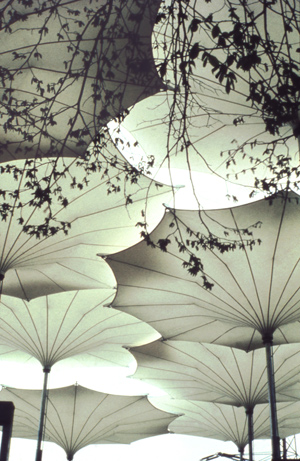 Time waits for no man. If anyone doubts this aphorism, the death yesterday of Frei Otto, a titan of modern architecture, a few weeks short of his 90th birthday, and a few short weeks before his receipt of the Pritzker Architecture Prize in Miami in May, represents a sad and striking example of this truism. His loss will be felt wherever the art of architecture is practiced the world over, for he was a universal citizen; whilst his influence will continue to gather momentum by those who are aware of it, and equally, by those who are not. Time waits for no man. If anyone doubts this aphorism, the death yesterday of Frei Otto, a titan of modern architecture, a few weeks short of his 90th birthday, and a few short weeks before his receipt of the Pritzker Architecture Prize in Miami in May, represents a sad and striking example of this truism. His loss will be felt wherever the art of architecture is practiced the world over, for he was a universal citizen; whilst his influence will continue to gather momentum by those who are aware of it, and equally, by those who are not.
Frei stands for Freedom, as free and as liberating as a bird in flight, swooping and soaring in elegant and joyful arcs, unrestrained by the dogma of the past, and as compelling in its economy of line and in the improbability of its engineering as it is possible to imagine, giving the marriage of form and function the invisibility of the air we breathe, and the beauty we see in Nature.
Pritzker Architecture Prize Laureates:
- Shigeru Ban, 2014 Laureate of the Pritzker Architecture Prize
Working with Frei Otto was always a lesson in creative thinking. He often used an unexpected approach to find the most appropriate structural solution.
I am truly indebted to Frei Otto for sharing his deep understanding and inventions in the field of structures.
I was deeply saddened to hear that Frei Otto had passed away on Monday. On the occasion of his 80th birthday ten years ago I wrote the following tribute:
Frei Otto showed us that architecture need not be burdened by the weight of its own traditions, but could instead be free to express itself through simple but innovative sculptural forms — his was an architecture inspired by lightness. This sense of weightlessness, and of an architecture unbound by convention, was carried over into Frei’s working relationships. Rather than working in isolation, he consistently advocated a freer role for the architect — whether this was as an educator, sharing his ideas with generations of students, or in practice, through valued joint projects with, or providing research support for, other architects and engineers. For me, he reinforced the point that architecture is a fundamentally collaborative exercise. His extraordinary structures altered the nature of architectural form in the twentieth century, and his environmentalism, intelligence and foresight have established the defining architectural mentality for the twenty-first. He was an inspiration.
- Frank Gehry, 1989 Laureate of the Pritzker Architecture Prize
Frei Otto forever changed the way we think about structure and building. Through his experiments in form-finding, Otto simultaneously affirmed and questioned the conventions of engineering as we knew it, and in the process showed us unprecedented solutions to age old problems — where others saw mass as the solution, he offered lightness. Like the ancients and others that came before him, he questioned the origins of our assumptions by going back to nature and figuring it out for himself. There he found systems, networks, and surfaces that exceeded all our imaginations. He found logic in complexity, and proceeded to translate the lessons he learned into efficiently realized constructions.
Otto was far ahead of his time in anticipating the issues that would confront the built landscape today: population density, transience, impermanence, energy demands, the growing scale of structures, etc. It is everyone's loss that we will not have his visionary contributions to the conversations of the day.
- Renzo Piano, 1998 Laureate of the Pritzker Architecture Prize
Frei Otto has been one of the most seminal person on my route to architecture.
By the clear determination to work on basic shelters for human communities.
And exploring the movement of forces within the structure to make it visible.
Celebrating lightness.
And fighting against gravity.
He succeeded in this and he will always be in my thoughts.
The Pritzker Architecture Prize 2015 Jury:
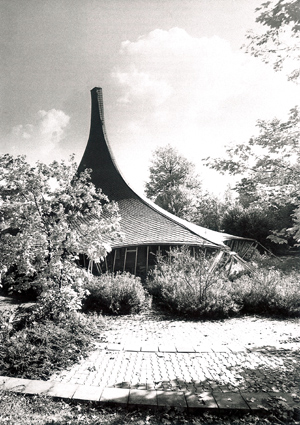 Throughout his life, Frei Otto has created imaginative, fresh, unprecedented spaces and constructions. He has also created knowledge. Here resides his deep influence: not as forms that were copied but as paths that were opened by his research and discoveries. His contribution to the field of architecture in that sense, has been not only skilled and talented, but also a generous one. Throughout his life, Frei Otto has created imaginative, fresh, unprecedented spaces and constructions. He has also created knowledge. Here resides his deep influence: not as forms that were copied but as paths that were opened by his research and discoveries. His contribution to the field of architecture in that sense, has been not only skilled and talented, but also a generous one.
To speak to architects about Frei Otto is to learn of the great influence that he has had, as a teacher and model, upon modern architecture in Europe and beyond.
Frei Otto is considered a genius and one of the most influential architects and visionary spirits of the twentieth century for his pioneering structural inventions, his designs based on deep humanism, his belief in fundamental research and the way he defines architecture as teamwork, — an interplay of collective knowledge of cross-disciplinary experts. Frei Otto has had and has a strong impact on generations of architects from all over the world — and will have it in future. He was always a step ahead his time.
Frei Otto is a pioneer for embracing new technologies, from new materials to new structural systems and bringing them into architecture. He has changed our discipline and practice in a revolutionary way. Today's architects are fascinated by the possibility of making lightweight buildings and curvilinear forms. For these interests, Frei Otto can be regarded as a father figure.
In today's media driven culture, too often we are presented with the architecture of novelty and or the spectacular. Architecture is not a short-term proposition; it must remain relevant over time. This year’s recipient has spent his lifetime researching, experimenting, and developing a most beautiful architecture that is timeless. It embodies the purity of lightweight shelter with structures that are economical, simple and are supremely beautiful. The lifelong work of Frei Otto has had and will continue to have a profound international influence on the thinking and work of architects.
Frei Otto is a revolutionary architect and structural engineer. He is renowned for his development and use of ultra-modern and super-light tent-like structures, and for his innovative use of new materials.
He is a great teacher and set up his own Institute for Lightweight Structures at the University of Stuttgart in 1964, making early use of computer modeling to create sensational membrane structures, inspired by natural phenomena — from birds’ skulls to soap bubbles and spiders’ webs.
Frei Otto is one of the great architects and engineers of the 20th Century and his work has inspired and influenced modern architecture, as we all learn to do more with less, and to trade monumental structures for economy, light and air.
When remembering the many projects of Frei Otto or looking at images of them, they bring forth emotions of joy, curiosity, admiration, a wish to imitate and further develop. These strong feelings that the work of 2015 Pritzker winner constantly evokes can be a beacon for us all.
Jury Citation
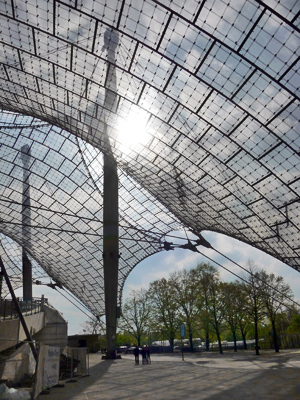 Frei Otto, born almost 90 years ago in Germany, has spent his long career researching, experimenting, and developing a most sensitive architecture that has influenced countless others throughout the world. The lessons of his pioneering work in the field of lightweight structures that are adaptable, changeable and carefully use limited resources are as relevant today as when they were first proposed over 60 years ago. He has embraced a definition of architect to include researcher, inventor, form- finder, engineer, builder, teacher, collaborator, environmentalist, humanist, and creator of memorable buildings and spaces. Frei Otto, born almost 90 years ago in Germany, has spent his long career researching, experimenting, and developing a most sensitive architecture that has influenced countless others throughout the world. The lessons of his pioneering work in the field of lightweight structures that are adaptable, changeable and carefully use limited resources are as relevant today as when they were first proposed over 60 years ago. He has embraced a definition of architect to include researcher, inventor, form- finder, engineer, builder, teacher, collaborator, environmentalist, humanist, and creator of memorable buildings and spaces.
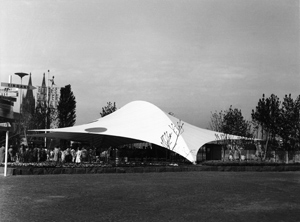 He first became known for his tent structures used as temporary exhibition pavilions. The constructions at the German Federal Garden exhibitions and other festivals of the 1950s were functional, beautiful, “floating” roofs that seemed to effortlessly provide shelter, and then were easily dissembled after the events. He first became known for his tent structures used as temporary exhibition pavilions. The constructions at the German Federal Garden exhibitions and other festivals of the 1950s were functional, beautiful, “floating” roofs that seemed to effortlessly provide shelter, and then were easily dissembled after the events.
The cable net structure employed for the German Pavilion at Expo 67 in Montreal, prefabricated in Germany and assembled on site in a short period of time, was a highlight of the exhibition for its grace and originality. The impressive large-scale roofs designed for the Munich Olympics of 1972, combining lightness and strength, were a building challenge that many said could not be achieved. The architectural landscape for stadium, pool and public spaces, a result of the efforts of a large team, is still impressive today.
Taking inspiration from nature and the processes found there, he sought ways to use the least amount of materials and energy to enclose spaces. He practiced and advanced ideas of sustainability, even before the word was coined. He was inspired by natural phenomena – from birds’ skulls to soap bubbles and spiders’ webs. He spoke of the need to understand the “physical, biological and technical processes which give rise to objects.” Branching concepts from the 1960s optimized structures to support large flat roofs. A grid shell, such as seen in the Mannheim Multihalle of 1974, shows how a simple structural solution, easy to assemble, can create a most striking, flexible space. The Mechtenberg footbridges, with the use of humble slender rods and connecting nodes, but with advanced knowledge, produce an attractive filigree pattern and span distances up to 30 meters. Otto’s constructions are in harmony with nature and always seek to do more with less.
Virtually all the works that are associated with Frei Otto have been designed in collaboration with other professionals. He was often approached to form part of a team to tackle complex architectural and structural challenges. The inventive results attest to outstanding collective efforts of multidisciplinary teams.
Throughout his life, Frei Otto has produced imaginative, fresh, unprecedented spaces and constructions. He has also created knowledge. Herein resides his deep influence: not in forms to be copied, but through the paths that have been opened by his research and discoveries. His contributions to the field of architecture are not only skilled and talented, but also generous.
For his visionary ideas, inquiring mind, belief in freely sharing knowledge and inventions, his collaborative spirit and concern for the careful use of resources, the 2015 Pritzker Architecture Prize is awarded to Frei Otto.
Jury Members
The Lord Palumbo (Chairman)
Architectural patron, Chairman Emeritus of the Trustees, Serpentine Galleries
Former Chairman of the Arts Council of Great Britain
Former Chairman of the Tate Gallery Foundation
London, England
Alejandro Aravena
Architect and Executive Director of Elemental
Santiago, Chile
Stephen Breyer
U.S. Supreme Court Justice
Washington, D.C.
Yung Ho Chang
Architect and Educator
Beijing, The People’s Republic of China
Kristin Feireiss
Architecture Curator, Writer, and Editor
Berlin, Germany
Glenn Murcutt
Architect and Pritzker Laureate 2002
Sydney, Australia
Richard Rogers
Architect and Pritzker Laureate 2007
London, England
Benedetta Tagliabue
Architect and Educator
Barcelona, Spain
Ratan N.Tata
Chairman Emeritus of Tata Sons, the holding company of the Tata Group
Mumbai, India
Martha Thorne (Executive Director)
Associate Dean for External Relations IE School of Architecture & Design Madrid, Spain
About the Pritzker Architecture Prize
The Pritzker Architecture Prize was founded in 1979 by the late Jay A. Pritzker and his wife, Cindy. Its purpose is to honor annually a living architect whose built work demonstrates a combination of those qualities of talent, vision and excellence, which has produced consistent and significant contributions to humanity and the built environment through the art of architecture. The laureates receive a $100,000 grant and a bronze medallion.
History of the Prize
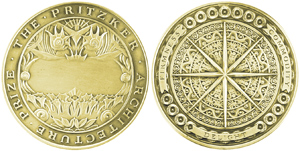 The Pritzker Architecture Prize was established by The Hyatt Foundation in 1979 to annually honor a living architect whose built work demonstrates a combination of those qualities of talent, vision, and commitment, which has produced consistent and significant contributions to humanity and the built environment through the art of architecture. It has often been described as “architecture’s most prestigious award” or as “the Nobel of architecture.” The Pritzker Architecture Prize was established by The Hyatt Foundation in 1979 to annually honor a living architect whose built work demonstrates a combination of those qualities of talent, vision, and commitment, which has produced consistent and significant contributions to humanity and the built environment through the art of architecture. It has often been described as “architecture’s most prestigious award” or as “the Nobel of architecture.”
The prize takes its name from the Pritzker family, whose international business interests, which include the Hyatt Hotels, are headquartered in Chicago. They have long been known for their support of educational, social welfare, scientific, medical and cultural activities. Jay A. Pritzker, who founded the prize with his wife, Cindy, died on January 23, 1999. His eldest son, Thomas J. Pritzker, has become chairman of The Hyatt Foundation. In 2004, Chicago celebrated the opening of Millennium Park, in which a music pavilion designed by Pritzker Laureate Frank Gehry was dedicated and named for the founder of the prize. It was in the Jay Pritzker Pavilion that the 2005 awarding ceremony took place.
Tom Pritzker explains, “As native Chicagoans, it’s not surprising that we are keenly aware of architecture, living in the birthplace of the skyscraper, a city filled with buildings designed by architectural legends such as Louis Sullivan, Frank Lloyd Wright, Mies van der Rohe, and many others.”
He continues, “In 1967, our company acquired an unfinished building which was to become the Hyatt Regency Atlanta. Its soaring atrium was wildly successful and became the signature piece of our hotels around the world. It was immediately apparent that this design had a pronounced effect on the mood of our guests and attitude of our employees. While the architecture of Chicago made us cognizant of the art of architecture, our work with designing and building hotels made us aware of the impact architecture could have on human behavior.”
And he elaborates further, “So in 1978, when the family was approached with the idea of honoring living architects, we were responsive. Mom and Dad (Cindy and the late Jay A. Pritzker) believed that a meaningful prize would encourage and stimulate not only a greater public awareness of buildings, but also would inspire greater creativity within the architectural profession.” He went on to add that he is extremely proud to carry on that effort on behalf of his family.
Many of the procedures and rewards of the Pritzker Prize are modeled after the Nobel Prize. Laureates of the Pritzker Architecture Prize receive a $100,000 grant, a formal citation certificate, and since 1987, a bronze medal. Prior to that year, a limited edition Henry Moore sculpture was presented to each Laureate.
Nominations are accepted from all nations; from government officials, writers, critics, academicians, fellow architects, architectural societies, or industrialists, virtually anyone who might have an interest in advancing great architecture. The prize is awarded irrespective of nationality, race, creed, gender or ideology.
The nominating procedure is continuous from year to year, closing in November each year. Nominations received after the closing are automatically considered in the following calendar year. The final selection is made by an international jury with all deliberation and voting performed in secret.

Pritzker Prize on AR
Credits
Text and images courtesy of Pritzker Prize/The Hyatt Foundation |
|
 |
  |
 |
|
|